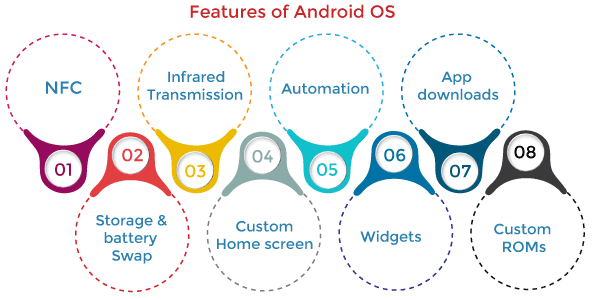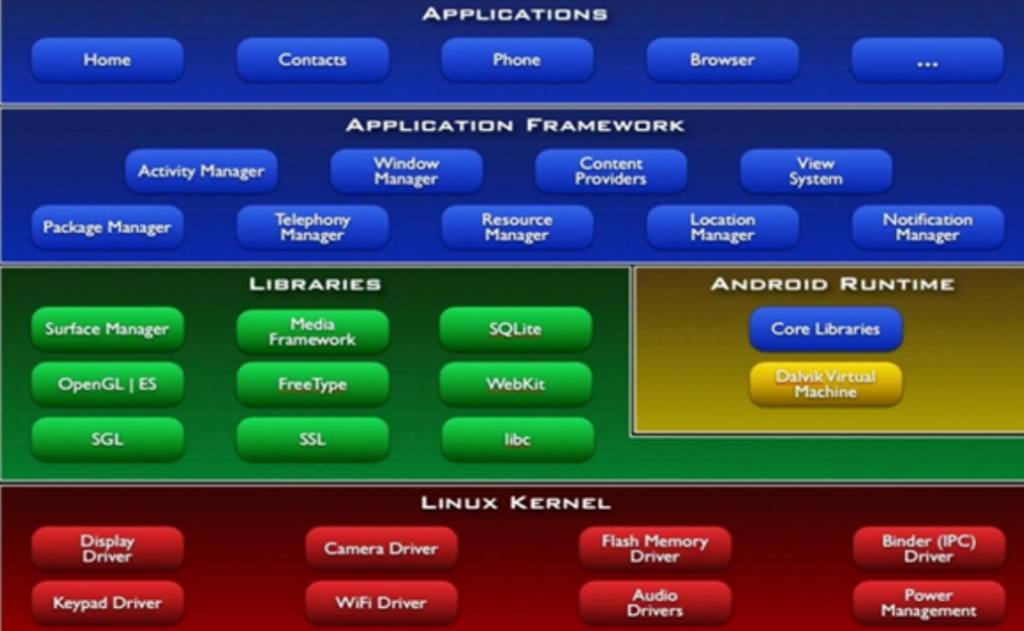Android Operating System based on a modified version of the Linux kernel and other open source software, designed primarily for touchscreen mobile devices such as smartphones and tablets. It’s available on devices made by a variety of manufacturers, giving you more choices of device style and pricing. Also, with the Operating System, you can customize your device in many ways.
Features – Android Operating System

- SMS and MMS messaging
- Video/still digital cameras
- Accelerated 3D graphics
- Multitasking applications
- Near Field Communication (NFC)
- Alternate Keyboards
- Storage
- Connectivity: GSM/EDGE, IDEN, CDMA, Bluetooth, WI-FI, EDGE,3G,NFC, LTE,GPS.
- Messaging: SMS, MMS, C2DM (could to device messaging), GCM (Google could messaging)
- Multilanguage support
- Multi-touch
- Video calling
- Screen capture
- External storage
- Streaming media support
- Optimized graphics
Android Architecture –

Linux Kernel :
Linux kernel supports a wide range of hardware drivers. The kernel is the heart of the operating system that manages input and output requests from the software. This provides basic system functionalities like process management, memory management, device management like camera, keypad, display, etc the kernel handles all the things.
Libraries :
These libraries are used to play and record audio and video.
Android Runtime :
Android runtime provides a key component called Dalvik Virtual Machine which is a kind of java virtual machine. Makes use of Linux core features like memory management and multithreading which is in java language.
Application Framework :
The application framework layer provides many higher-level services to applications such as windows manager, view system, package manager, resource manager, etc.
Applications :
You will find all the android applications at the top layer and you will write your application and install it on this layer.
Android Operating System – Advantages & Disadvantages

Advantages
- Easy access to android apps.
- Mass storage, disk drive, and UDB option.
- SMS and Emails or the latest updates.
- Multitasking.
- 2D and 3D graphics.
- High job demands for Android developers.
- Notifications can be displayed very clearly.
- Cloud storage.
Disadvantages
- Apps work in the background.
- Battery discharges easily due to a lot of processes.
- Requires Google account.
- Less security.
- Mobiles with low specification run very slow.
- Difficult layouts & animations are tough to code within Android.
- Protection of Virus.
